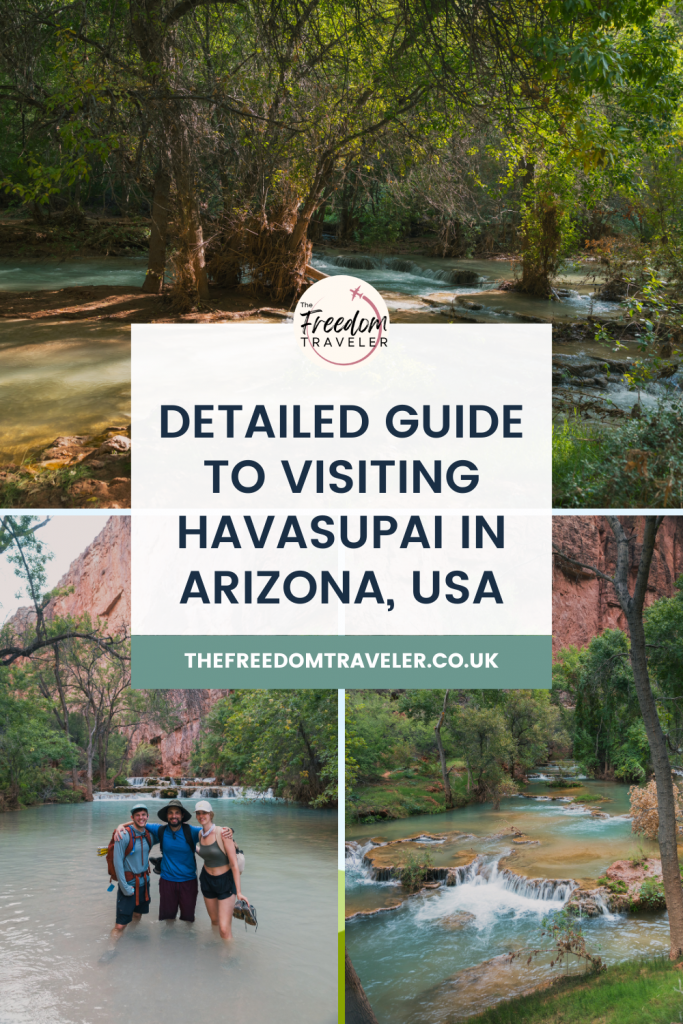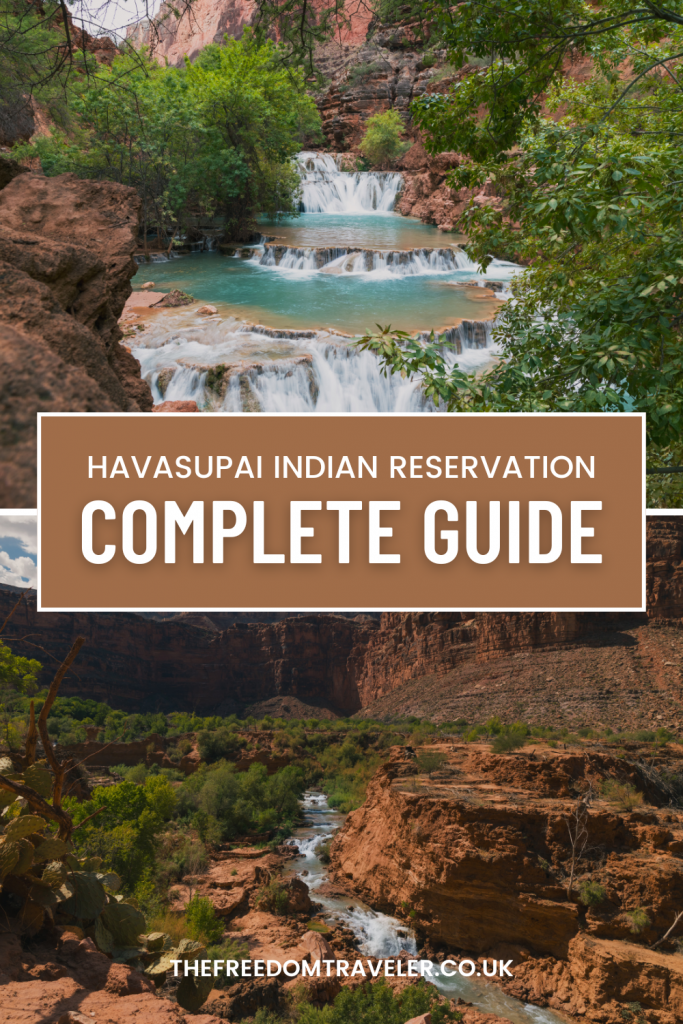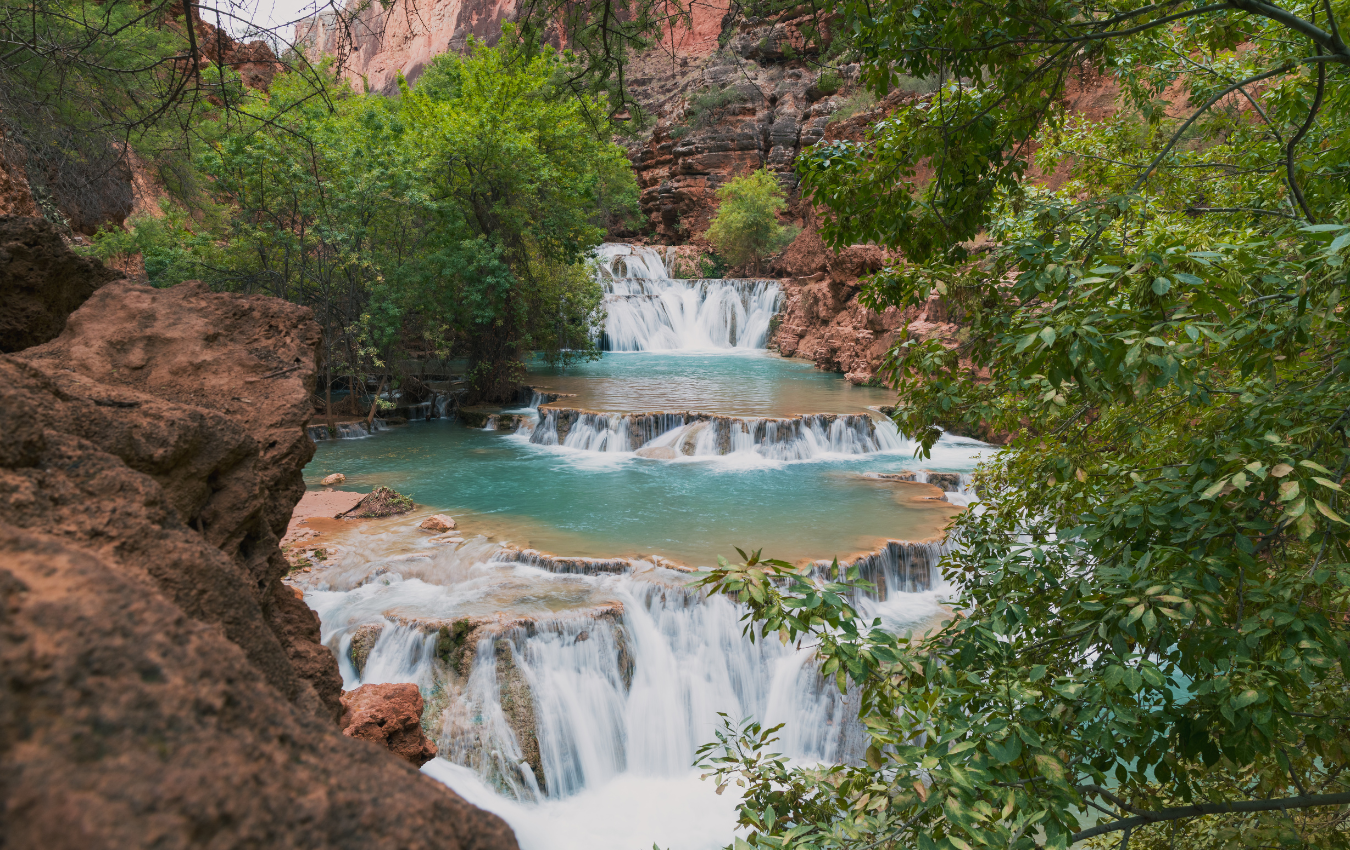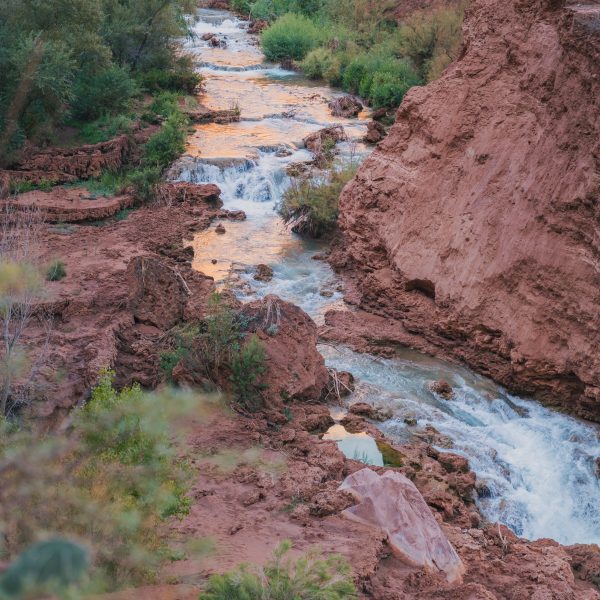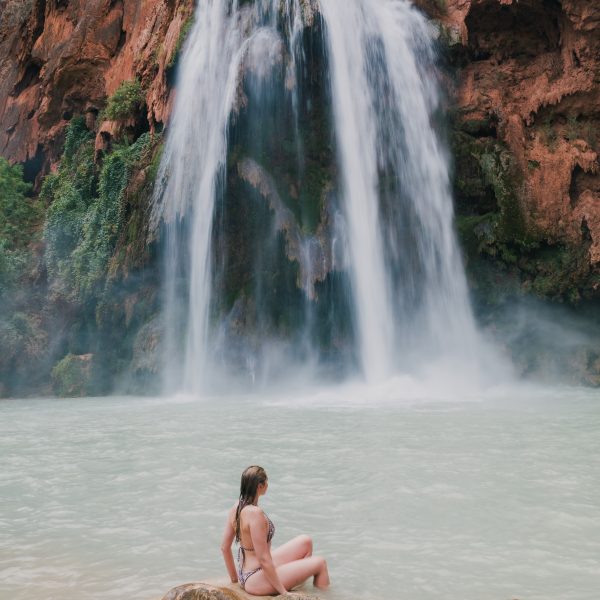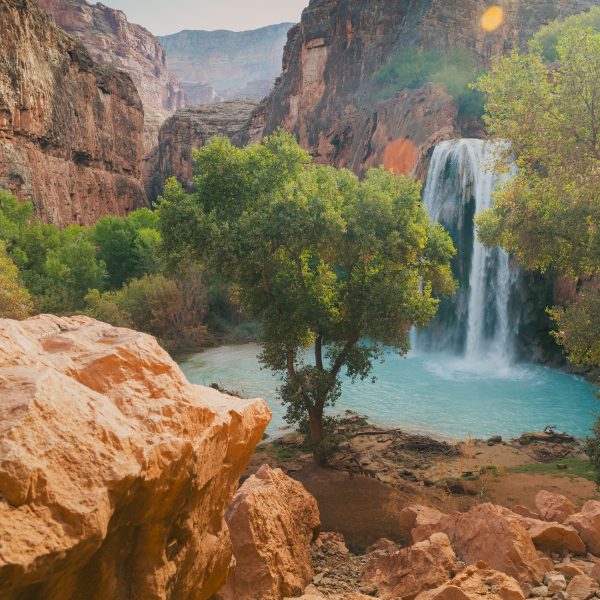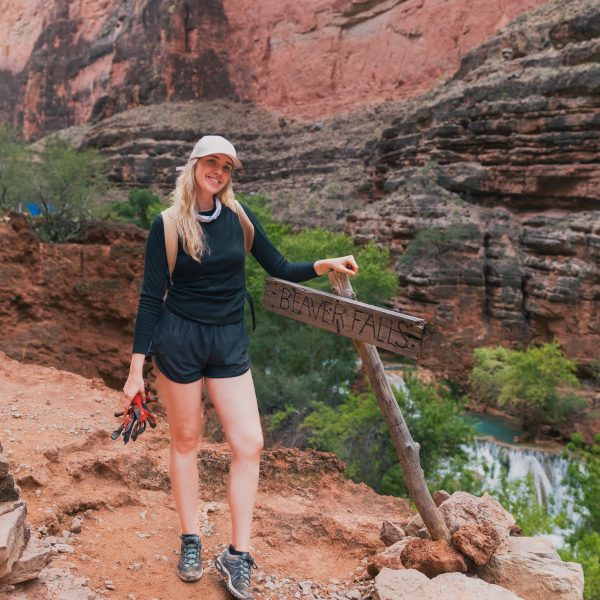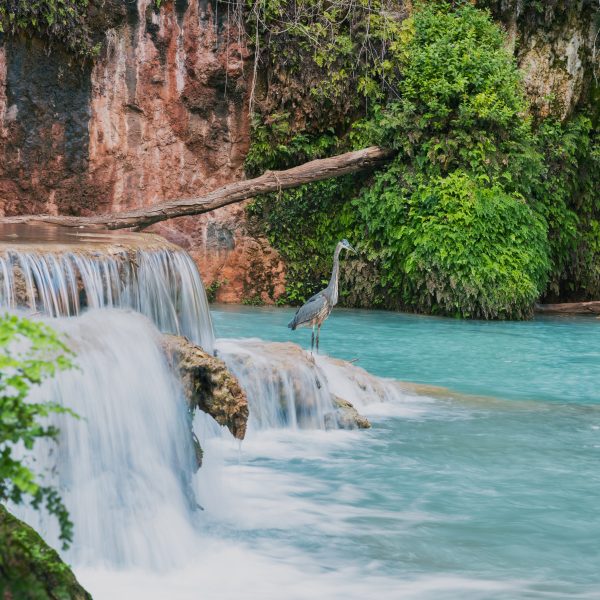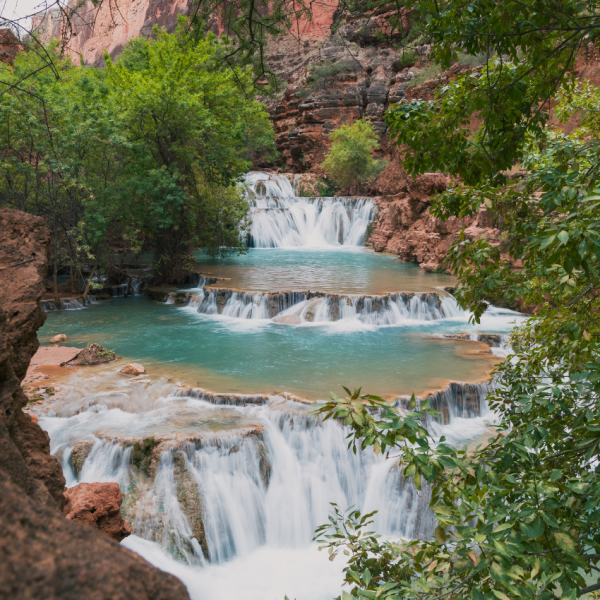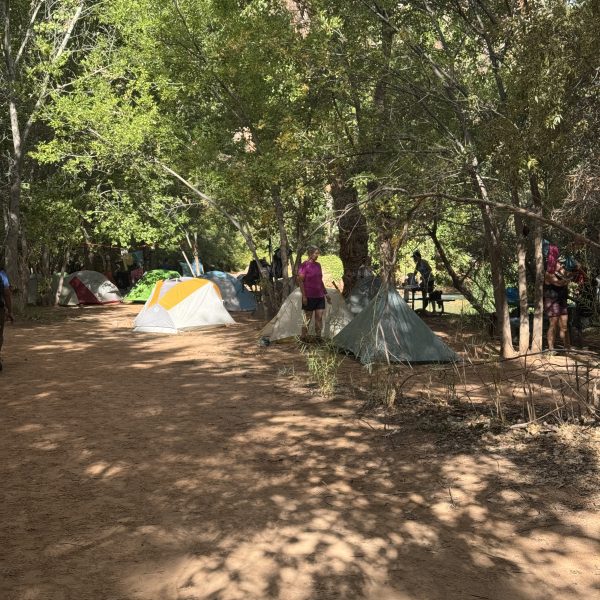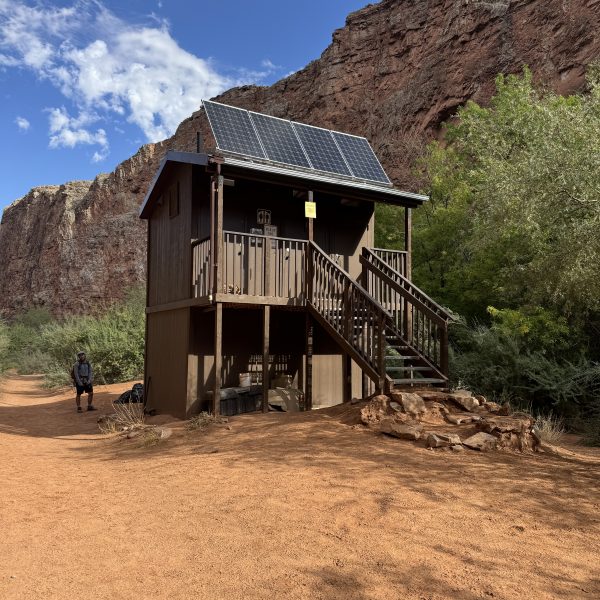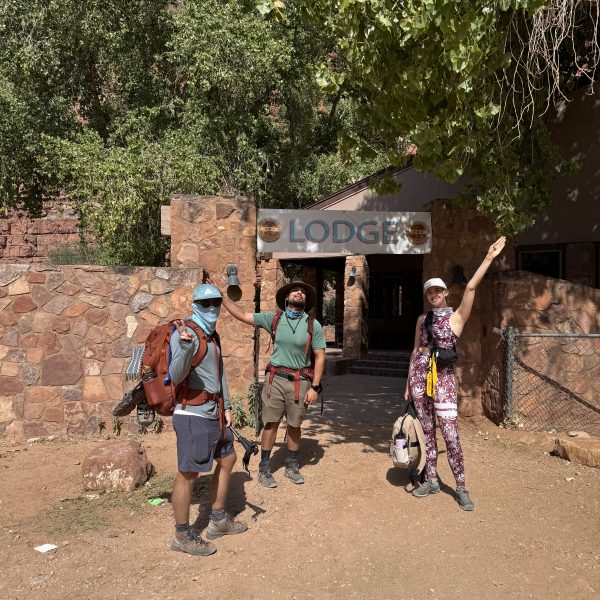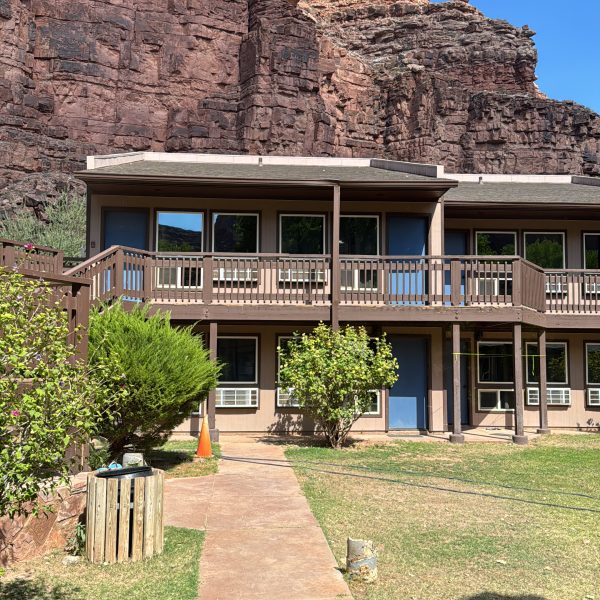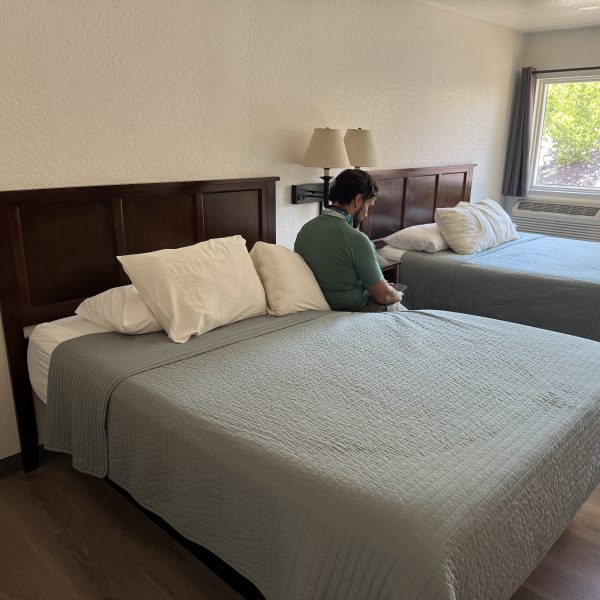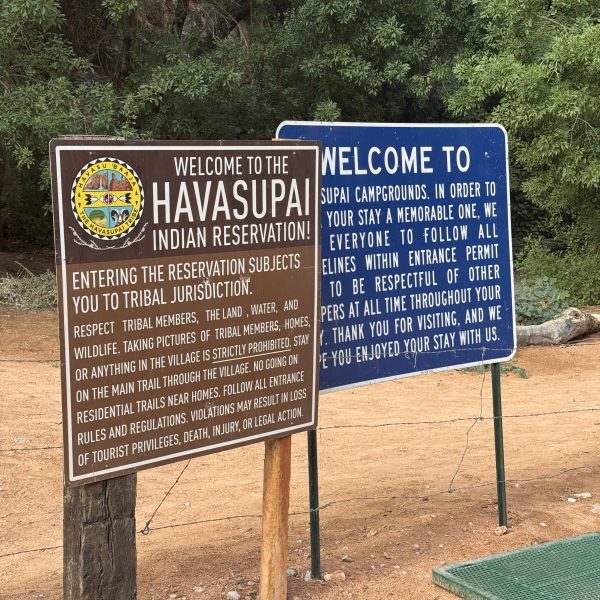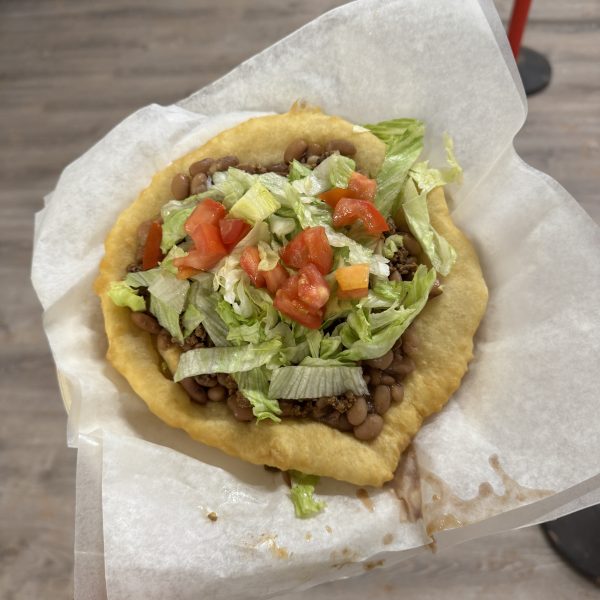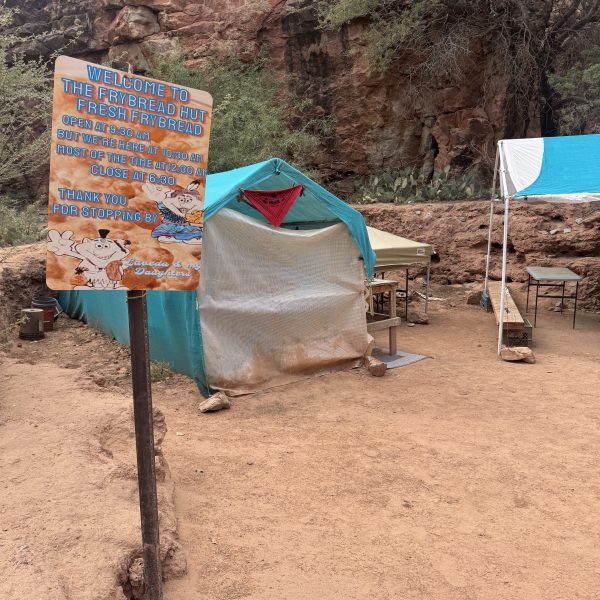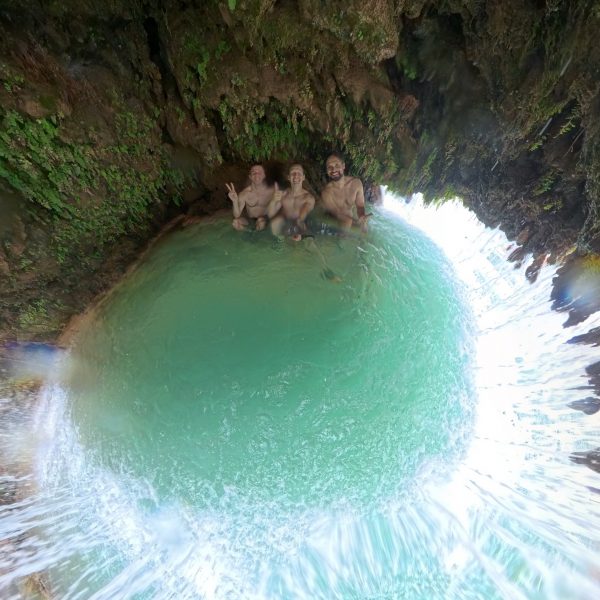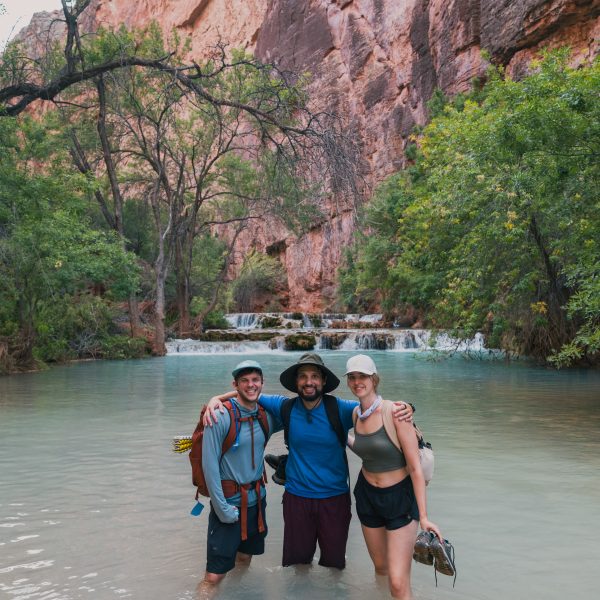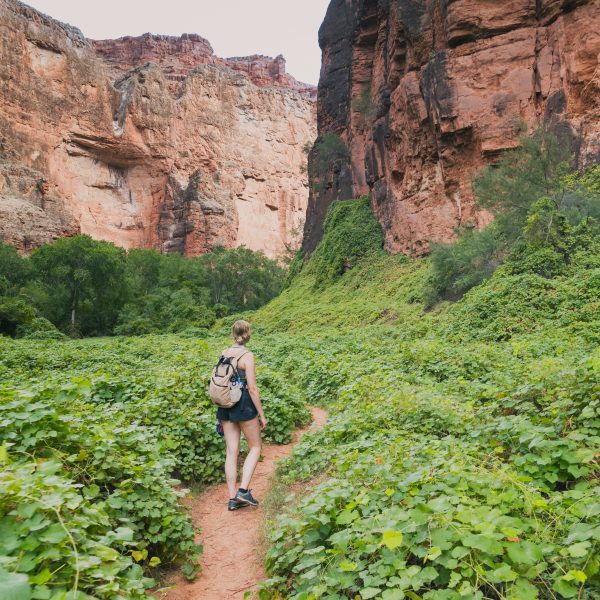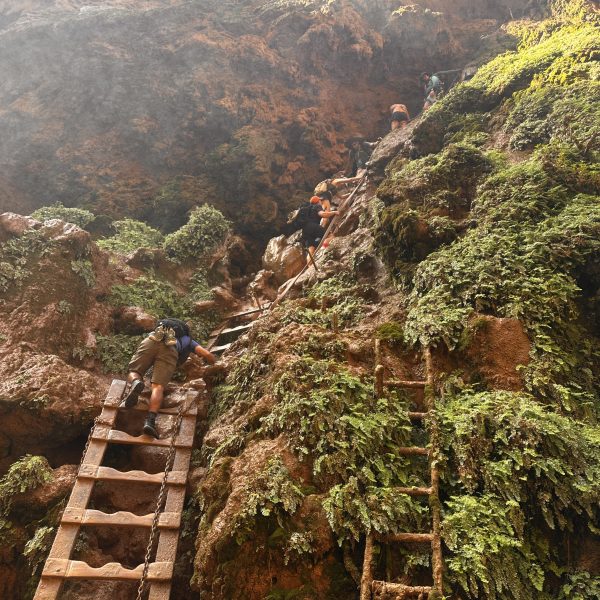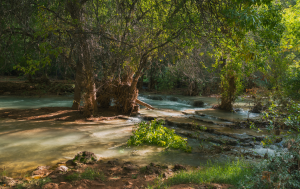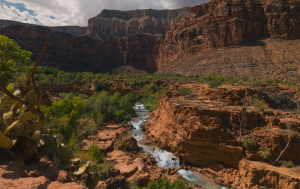If you’re looking for one of the most exclusive hikes in the world, Havasupai needs to be on your radar. Nestled in the heart of the Grand Canyon, this sacred land offers not just jaw-dropping waterfalls but also a raw, remote experience few ever get the chance to live. And trust me, this isn’t just a hike, it’s a once-in-a-lifetime kind of adventure.
Table of Contents
ToggleIn this complete guide, I’m giving you everything I learned: permits, packing tips, hiking times, and all the juicy details on what to expect. Let’s go!
What is Havasupai?
Havasupai is a 1000-year-old Native American reservation located in northern Arizona, tucked deep within the Grand Canyon. It’s home to the Havasupai Tribe and boasts some of the most beautiful turquoise waterfalls in the United States. The land is sacred and preserved, so only a limited number of people can visit each year. This makes the experience incredibly special and also a little competitive to book.
What Is There to See and Do in Havasupai?
Waterfalls, hikes, village visits, and epic views, Havasupai is packed with natural wonders. Here’s what you can’t miss:
Little Navajo Falls & Hidden Falls
Just a short hike from the village, these falls are a peaceful start to your adventure. The water is clear and calming.
Fifty Foot Falls
A tall and dramatic waterfall that feels completely wild. Not as crowded, so you’ll likely have it all to yourself.
Havasu Falls
This is the star of the show, perfect for swimming, tanning, and just soaking it all in. Picture those dreamy Instagram photos… yep, it’s here.
Mooney Falls
Getting there is not for the faint of heart. You’ll descend using chains and ladders, but the reward is totally worth it. It’s one of the tallest and most powerful falls. This waterfall is perfect for swimming, tanning, and just soaking it all in. Picture those dreamy Instagram photos… yep, it’s here.
Beaver Falls
One of the most magical places I’ve ever been. The hike takes about 9-10 hours round-trip from the lodge, including breaks at both waterfalls (Mooney and Beaver). You’ll cross the river three times, so bring water shoes. It’s layered, lush, and unforgettable. From the campground, the trail to this waterfall is 6 miles; if you depart from the lodge, you will need to add 3 extra miles.
Havasu Creek & Colorado River Confluence
This is the longest and most intense hike. You’ll need to start before 5:30 AM and keep a solid pace to make it back before dark. It passes through both Mooney and Beaver Falls. If you’re up for it, the reward is absolutely epic.
You can also reach the confluence by rafting (which is another cool option if you want to combine it with a Colorado River trip!).
When Can You Hike to Havasupai?
You can trek to Havasupai between February and November, which is when the official permit season runs. Honestly, the best times to go are spring and autumn, think March to May or September to November, when the weather is much more bearable, especially with all the hiking and exploring you’ll be doing. That being said, summer (June to August) can get brutally hot, and the trail sometimes shuts down when temps go over 46°C (115°F). As for winter, it’s a no-go. The area is completely closed from December to February for tourism, so plan accordingly!
What Is the Weather Like in Havasupai Indian Reservation?
Havasupai experiences two very distinct weather patterns: a dry season and a monsoon season.
The dry season, running roughly from March to June and September to early November, tends to bring clear skies, lower humidity, and stable conditions — ideal for hiking and camping. Temperatures in spring and fall are usually mild, with daytime highs between 70°F and 90°F (21°C to 32°C) and cooler nights. If you’re a fan of manageable heat and fewer weather surprises, this is your window.
Now, if you’re going during summer (June through August), get ready for the Arizona heat and the monsoon season, which hits hard from mid-June through early September. This means sudden, heavy rainstorms, lightning, flash flood risks, and trail closures when temps exceed 115°F (46°C). It can be both breathtaking and brutal. We’re talking scorching sun one minute, then a sky-opening downpour the next. These storms are powerful and unpredictable. Furthermore, if you’re camping near the riverbanks, they can be dangerous.
Winter (December through February) is officially closed for tourism, and for good reason; temperatures can drop below freezing, and snow sometimes dusts the canyon rim.
In short:
☀️ Best time to visit? Late March to early June or September to early November.
🌧️ Monsoon season? Mid-June to mid-September = stunning but risky.
❄️ Closed season? December through February.
Regardless of the time you choose to visit, always check the Havasupai official updates for any weather-related trail alerts or closures. This place is magical — but it definitely plays by Mother Nature’s rules.
How Long Can You Stay in Havasupai?
Permits allow you to stay for a maximum of 3 nights. That gives you just enough time to hike in, explore all the waterfalls, and soak it all up before heading back out. You can, of course, stay for a shorter amount of time, but this will not reduce the cost of the ticket.
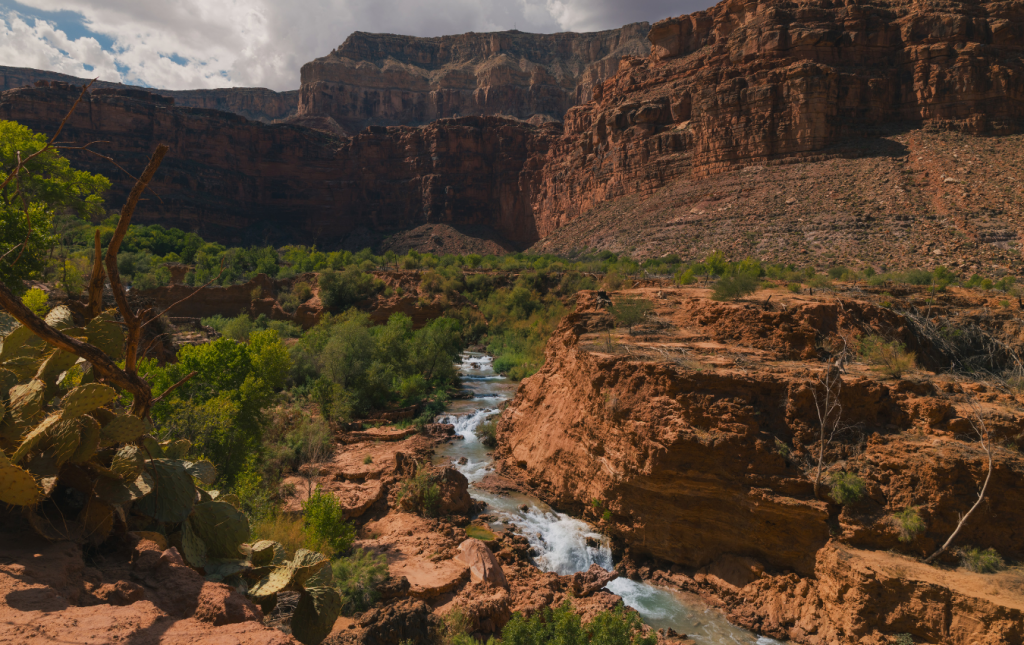
How to Get a Permit for Havasupai Indian Reservation
You’ll need a bit of luck, to act fast and some flexibility here.
- Head to the Havasupai Reservations website, sign in and enter the lottery system.
- You can enter the lottery in winter (Dec-Jan) keep an eye on their official website for the exact dates. If you’re picked, you need to keep reading to pack like a pro! You’ll know the result in February.
- If you are not selected at the lottery, they release permits on a first-come come first-served basis in February (make sure to set a reminder!)
- If you’re not selected and couldn’t secure a permit in February, don’t panic! Many people cancel.
→ Use this Facebook group to keep an eye on cancellations:
Havasupai reservations – Transfers and Cancellations
Once you secure a permit, you’ll need to pick it up in person at:
Grand Canyon Caverns & Inn
(You can collect it the day before, before 6 pm, or the morning of your hike, but note that it only opens at 6 am and is 1H drive away from the starting point of the trail.)
💡 Tip: Leave Las Vegas around noon and stay overnight at the Caverns Inn. That way, you can start the hike early and arrive at the village with plenty of time.
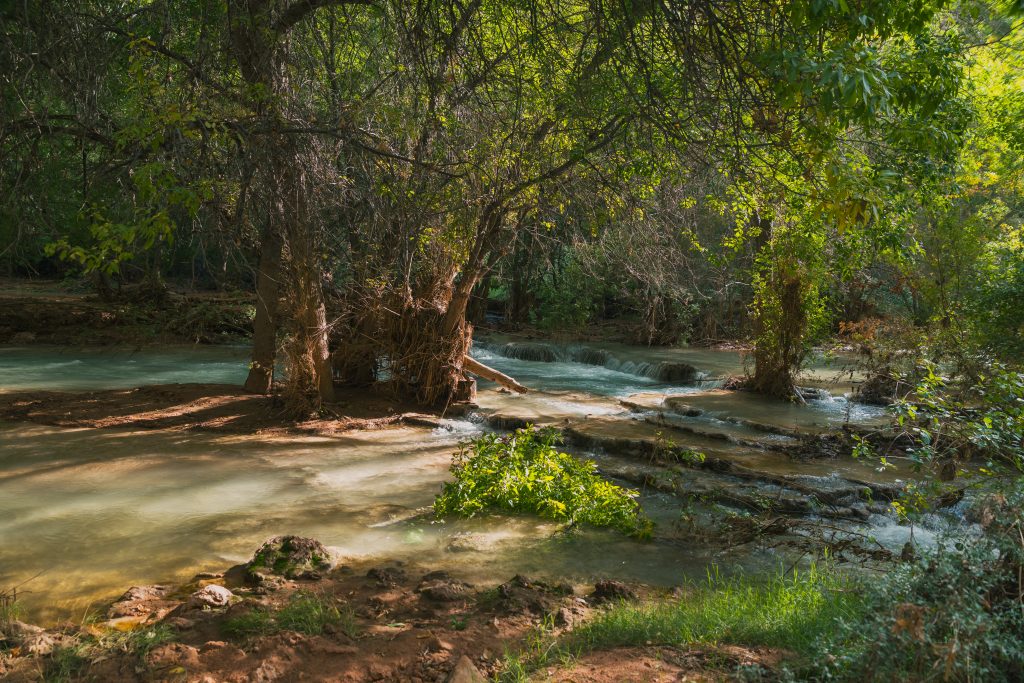
Where to Sleep in Havasupai?
There are two options, depending on your luck and what’s available.
The Campground of Havasupai
- Rustic, quiet, and surrounded by nature
- You’ll need to be fully self-sufficient
- Facilities include: spring water, picnic tables, trees for shade and toilet cabins
You can find my review of the Campground on this link.
The Lodge (Lucky us! We got this in the lottery 🙌)
Located right in Supai Village, it’s the most comfortable and convenient option.
Lodge amenities include:
- Room with 2 double beds, fridge, microwave, table, chairs
- Private bathroom (yes, with a shower and hot water!)
- WiFi available at the lodge
- Access to the lobby from 9am to 5pm, with tea, snacks, and leftover food from previous hikers
Want my full review of the lodge? Click here for all the cosy details!
How Long Does It Take to Hike In?
We started at 6:30 am and reached the lodge at 10:45 am, that’s 4 hours and 15 minutes for 8 miles. We stopped a lot for photos and snack breaks, which slowed us down, but that’s part of the experience to enjoy your surroundings and take it all in.
If you’re going to the campground, it’s 3 miles further. So count around 5 hours total, depending on your pace.
I recommend you to start early to avoid the heat and arrive before the lodge closes for lunch at 1 pm. You can check it from 11am, we did not know that when arriving but were happy to only have to wait 15 minutes to access our room.
Leaving the Canyon: Hike, Mule, or Helicopter?
- Hike back (same way you came in), it took us slightly less time to go back up. We left the lodge at 4:15am and reached the top at 8am. The early start allowed us to witness the sunrise in the canyon and avoid the heat, making the trail way more enjoyable. Noted that if you go with that option you’ll need a headlamp as it will be pitch dark until 6 am.
- Pre-book a mule to carry your backpack, which saves your back, but still requires hiking. You might want to consider that option if you are at the campground. Also note that, depending on the weather, the mule might not go up or down, so this is to be taken into consideration when having them carry one of your backpacks. With the above in mind, especially if you are staying at the campground you’ll want to keep your sleeping gear with you.
- Helicopter exit:
- $150 per person = not guaranteed
- $250 per person = guaranteed priority
- $50 extra per backpack
- Ride takes just 5 minutes and offers iconic views
- $150 per person = not guaranteed
Note that the helicopter will also depend on the weather conditions, and you’ll need to start queuing from 7 am without any guarantee on the time you’ll be able to fly out.
All the above transportation options are also available on your way there if you do not wish to do the trail or carry your backpack, you’ll need to pre-book your mule or helicopter ride when you go to collect your permit.
Looking for a more scenic experience? Book a proper helicopter tour for a full aerial view of the Grand Canyon:
How Much Does It Cost to Visit Havasupai?
Yep, it’s pricey, but so worth it.
- Campground permit: $455 per person (3 nights)
- Lodge stay: $2,277 for 3 nights (up to 4 people in one room)
That makes Havasupai the most expensive hike in the world, but remember, you’re paying for access to a sacred, protected, and exclusive experience. You can find more information on this page of their official website
Where to Eat at Havasupai?
There are a few food options, but come prepared.
- Supai Market has basics (canned goods, fruits, snacks), but stock runs out often and restock can’t be guaranteed.
- Café in the village serves breakfast (until 10:45am) and lunch (until 4:45pm) with fry bread and comfort food.
- Fry bread stand near Havasu Falls, an ideal location but we’ve never witnessed it open during our stay and went by the waterfall everyday at different time.
- Pizza delivery in the village (yep!), but pricey (count $27–$38 per pizza), we personally passed so I can’t report on the taste.
💡 We bought lightweight dehydrated meals that we found at REI store, snacks, oats, tortilla, tuna and other camping-friendly foods so we could be self-sufficient. However, we still went a few times to the supermarket to buy more snacks and drinks. I also went to the cafe to try the typical Supai Fry Bread ($16.72), and I definitely recommend that you do the same, as this is an experience on its own (and it was delicious!).
What to Pack for Havasupai
You want to stay light, but don’t forget these essentials:
- Trekking shoes
- Water shoes
- Water bottle & electrolytes
- Sunblock, sunglasses, a cap, and a headband
- Hiking gear & rain jacket
- Thermal jumper for chilly nights
- Food & snacks (especially with dietary restrictions)
- Swimming costume & quick-dry towel
- Blister bandages & trekking socks
- Swiss army knife & card game (hello lodge nights!)
- Walking Pole
🛒 I created Amazon shopping lists to help you pack smart:
- Camping Packing List for Havasupai https://amzlink.to/az0EjWDp4xXU1
- Lodge Packing List for Havasupai https://amzlink.to/az0zG1U6i76Rj
Pro tip: If you’re bringing canned food, make sure it has a pull tab!
What’s in Supai Village?
Don’t expect a cultural immersion; the village is not open for deep tourist interaction, but here’s what you’ll find:
- A school and 2 churches
- A supermarket (limited stock)
- A café (hello, fry bread!)
- Private homes
- The Lodge
- WiFi: “Tourist” network — password: FigTree
The tribe doesn’t share much about their traditions, and many are slowly re-learning their heritage. Respect their privacy, and just enjoy the hospitality of being welcomed on their land.
Why You Should Hike to Havasupai?
This is not just a hike, it’s an adventure of a lifetime.
You’ll push your limits, hike through some of the most beautiful waterfalls in the world, and disconnect in a sacred, remote corner of Arizona. It’s expensive, it’s exclusive, but it’s truly unforgettable.
If you ever get the chance to go, take it. You’ll come back changed.
If you have more questions after reading this guide, feel free to reach out via Instagram, I’m always happy to help!
